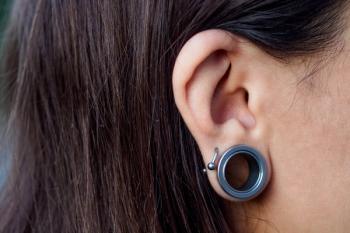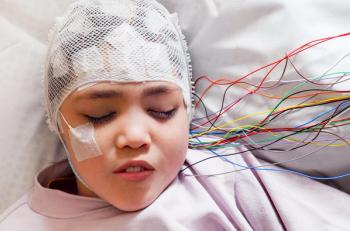
A physician’s curiosity leads to discovery of both the cause and a “cure” for the effects of adverse childhood experiences (ACEs) on patient health.

A physician’s curiosity leads to discovery of both the cause and a “cure” for the effects of adverse childhood experiences (ACEs) on patient health.

From ear infections to croup to strep, I have found that the simplest diagnosis is often the best diagnosis.

New research looks at the role of maternal-placental-fetal interaction on cognitive function and disease.

A new customized therapy for acute lymphoblastic leukemia (ALL) offers high remission rates but at a substantial cost, and only at specialized cancer centers.

A 3-week-old female presented to the emergency department with a 3-day history of a progressively enlarging, erythematous, seemingly painful lump on her back.

A 16-year-old girl presents for evaluation of an asymptomatic brown rash over her central chest and back that developed over the preceding 6 months. She is embarrassed by the appearance.

A new device for the heart is designed to accommodate a child’s growth, potentially improving the success rate of a valve repair and reducing the need for more operations.

Despite a lack of consensus on the importance of screening infants for vision problems, there is proof that screening preschoolers can catch serious problems and allow for corrections to prevent permanent vision loss.

Surviving cancer is challenging enough, but now a recent report highlights the fact that survivors face double the chronic health challenges of the general population as a result of curative cancer therapies.

I highly recommend reading his article, and then reflecting on your current office- and hospital-based practices surrounding prescribing medications for children to determine areas to apply these best practice initiatives in your personal work settings.

AAP’s first ever clinical report on body modification guides pediatricians on medical precautions and counseling practices.

In-depth coverage of the 2017 American Academy of Pediatrics Annual Meeting in Chicago, Illinois.

For Contemporary Pediatrics, Dr Bobby Lazzara discusses a study published in Pediatrics that surveyed mothers at 32 hospitals in the United States about their intention to follow American Academy of Pediatrics' recommendations for safe sleep versus what the mothers practiced.

A recent study examines the effects of early treatment for infants with hearing loss on development of language skills.

The mother of a healthy 11-year-old boy brings him to the office for help to clear a rash that has persisted around his mouth for 3 months. Although the boy rarely licks his lips, he does not use lip products and has not changed his dental products.

Medication errors are all too common in pediatric practice, whether in the hospital, home, or office. Here’s helpful advice how to avoid the hazards of pediatric prescribing and medication missteps.

The link between a child’s losing a father and poor health is well documented. Now a new study shines a light on the biologic factors that may underlie this association.

Parents of children who visit a pediatric emergency department often report that their child has an allergy to penicillin, which can lead to treatment with a less than optimal antibiotic.

Most pediatricians advise patients and their parents who smoke to quit, and the proportion of those who do so changed little from 2004 to 2010, according to surveys conducted in those years.

Pediatricians know from their training that chemicals in the environment are important causes of neurodevelopmental and other health problems in children, but clinicians need to keep that information top-of-mind in daily practice and apply it in counseling and evaluation, said Philip J. Landrigan, MD, MSc, FAAP.

A 5-month-old Hispanic male presented to the emergency department (ED) at a children’s hospital in the Northeast United States directly from his daycare after caretakers witnessed 2 shaking, seizure-like episodes. The episodes lasted 1 to 2 minutes in the setting of a fever as palpated by the parents.

Innovations in the evaluation and management of appendicitis could lead to better patient care and improved outcomes.

New guidance for pediatric hypertension makes it easier for primary care physicians to identify children and adolescents with high blood pressure and manage them in an appropriate manner.

Children are not little adults, and it’s only common sense to be aware of a child’s age and weight when dosing pharmaceuticals. Here are some other helpful gems I’ve uncovered about medications.

Visually oriented social media platforms created by their peers can have a significant negative impact on adolescents’ body image.

For the first time in a decade, there are antibiotics newly approved for use in children with skin and skin structure infections that do not respond to conventional treatment.

Early detection of hearing status in children is critical to prevent the significant detrimental effect on cognitive development it can have if not appropriately addressed.

What causes chest pain and syncope in children and adolescents, and how can pediatricians recognize and eliminate the causes that may lead to significant morbidity or even death?

Pediatricians are the frontline providers for identifying neurologic problems in neonates and infants.

Because the burden of atopic dermatitis in children is significant and can adversely impact a child’s normal socialization development, accurate diagnosis and effective treatment are vital.